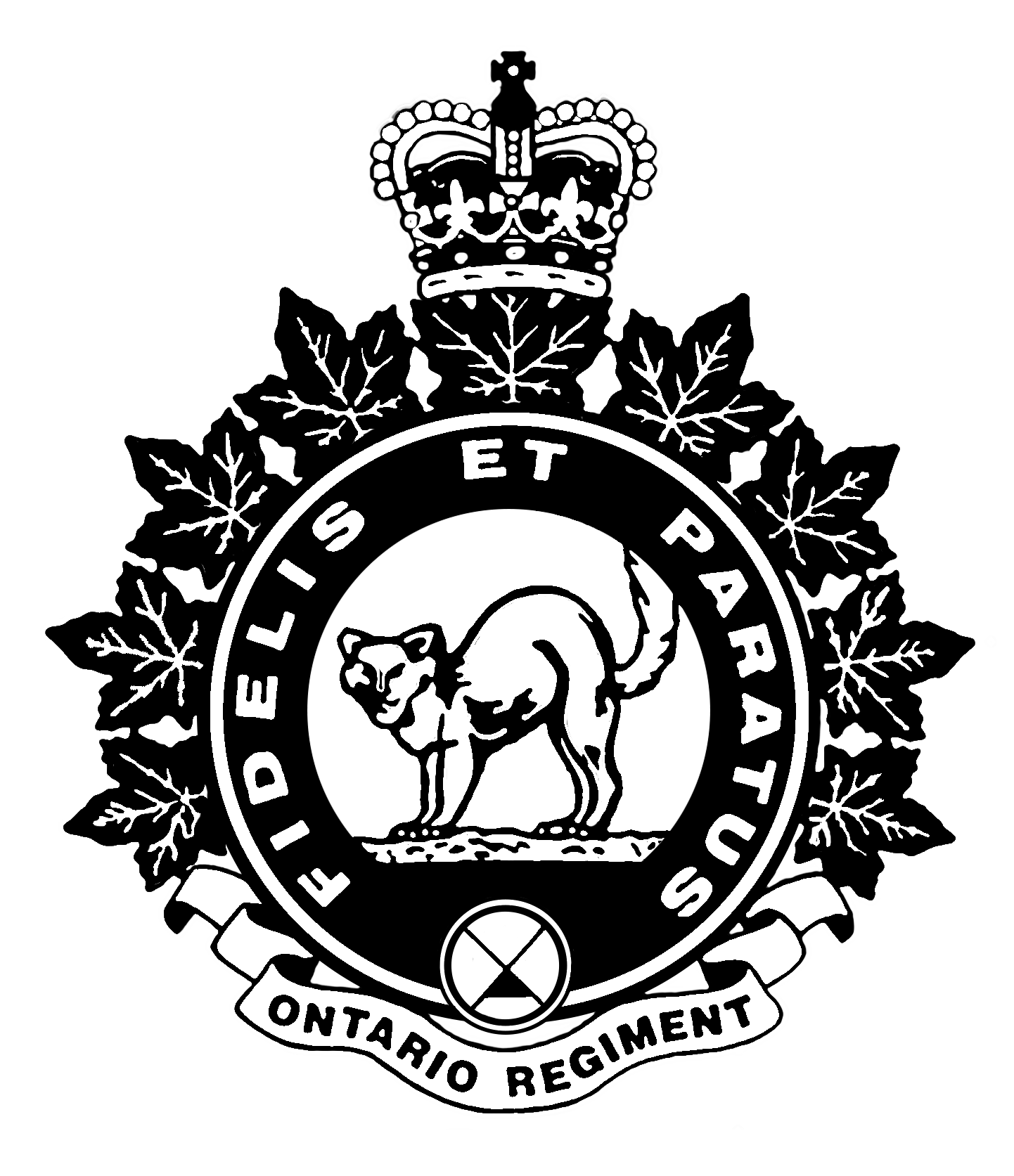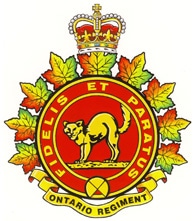By late January, 1945 all the Ontario Regiment’s tanks had returned from their static gun positions to the various squadron lines, as detailed in the article “January 1945”. Late in the month a warning order was received that the Ontarios were soon to come under the command of the British Eighth Army and would be moving to the Adriatic coast. The training and camp routine were now replaced with preparations for the move. The first load of tanks moved off by train on 31 January and by 4 February the majority of the Regiment’s vehicles and personnel had assembled at Porto San Giorgio.

The Ontarios did not stay on the Adriatic coast for long though, as a warning
order for another move came on 20 February. It was the beginning of Operation Goldflake.
Goldflake was the move of the entire 1 Canadian Corps and the 1st
Canadian Armoured Brigade from Italy to Northwest Europe, where they were to
join the 1st Canadian Army who had been in combat since 6 June 1944.
“A” Squadron loaded their tanks on transporters on 21 February, along with a small number of “B” Squadron’s vehicles. The remainder of the Regiment’s tanks were loaded over the next two days. The wheeled vehicles moved off in convoy on 26 February for a two-day road move. All unit identification was removed from the vehicles. Personnel also removed any identification from their uniforms, leaving only rank badges. The destination of the Regiment was Livorno (Leghorn) on the west coast of Italy where the Regiment would embark for southern France.


By 28 February all of the Regiment’s vehicles and personnel had arrived at Harrod’s Camp, five miles north of Livorno. On that same day the Regiment’s commanding officer, Lieutenant-Colonel R.L. Purves, left for Marseille, France where he was assigned as Officer in Command of the 1st Canadian Armoured Brigade rear party. Major C.M. McLean was placed temporarily in command of the Ontario Regiment.
On 1 March the vehicles were sprayed with diesel oil to protect against corrosion during the impending sea voyage. All of the Regiment’s vehicles were loaded on several Landing Ships Tank over the next three days. The Brigade sailed from Livorno in two convoys. The first convoy left on 5 March and arrived at Marseille on the following morning. Two of “B” Squadron’s vehicles were damaged beyond repair when a tank broke loose in rough seas. One soldier was injured during this incident. The second convoy sailed on 6 March but was unable to dock at Marseille until 9 March due to rough seas.
Upon arriving in Marseille the wheeled vehicles and light tracked vehicles were driven to a transit camp administered by Delta Base section, US Army, eighteen miles north of Marseille. Orders were given that no personnel were to have contact with French civilians on the route from the port to the camp or while in camp. The Sherman tanks were kept in the Marseille dock area.

The tracked vehicles were loaded on tank trains, with the first leaving on 7 March carrying a load of 18 Sherman tanks. The first wheeled convoy, under command of Major H.L. Higginbottom, left the transit camp the following morning and the second convoy left on the 10th,commanded by Major D.H. McIndoe. Also on the 10th, the final tank train departed Delta Base transit camp and the first train arrived at Menin, Belgium. The Regiment’s vehicles were now spread across the 1000 kilometres between Marseille and Menin. The wheeled convoys moved north over several days, spending each night in staging camps at Saint-Rambert-d’Albon, Mâcon, Les Laumes, Rozay-ew-Brie, and Cambrai. The final destination for the Ontarios was Mouscron in Belgium, about 20 miles north of Lille, France. The tank trains and wheeled convoys arrived in batches, with all the Regiment’s vehicles and personnel assembled in Mouscron on 15 March. Lieutenant-Colonel Purves arrived in Mouscron from his rear party duties in Marseille and resumed command of the Regiment on 16 March.
A change in establishment was put into effect during the Regiment’s time in Mouscron. The composition of a tank troop was changed from three tanks to four to match that of the 1st Canadian Army. To achieve this expansion, more tank crews arrived at the Regiment and 20 additional 17-pounder Shermans were taken on charge on 20 and 21 March. Each troop now consisted of two Sherman tanks with the 75-mm gun and two with the more powerful 17-pounder. The Ontario Regiment was now ready for the push into the Netherlands and the final phase of the war.
Rod Henderson
Rod Henderson is the Regimental Historian of the Ontario Regiment. He served as a Sergeant in the Regiment and is the author of “Fidelis Et Paratus: The History of The Ontario Regiment RCAC”.


